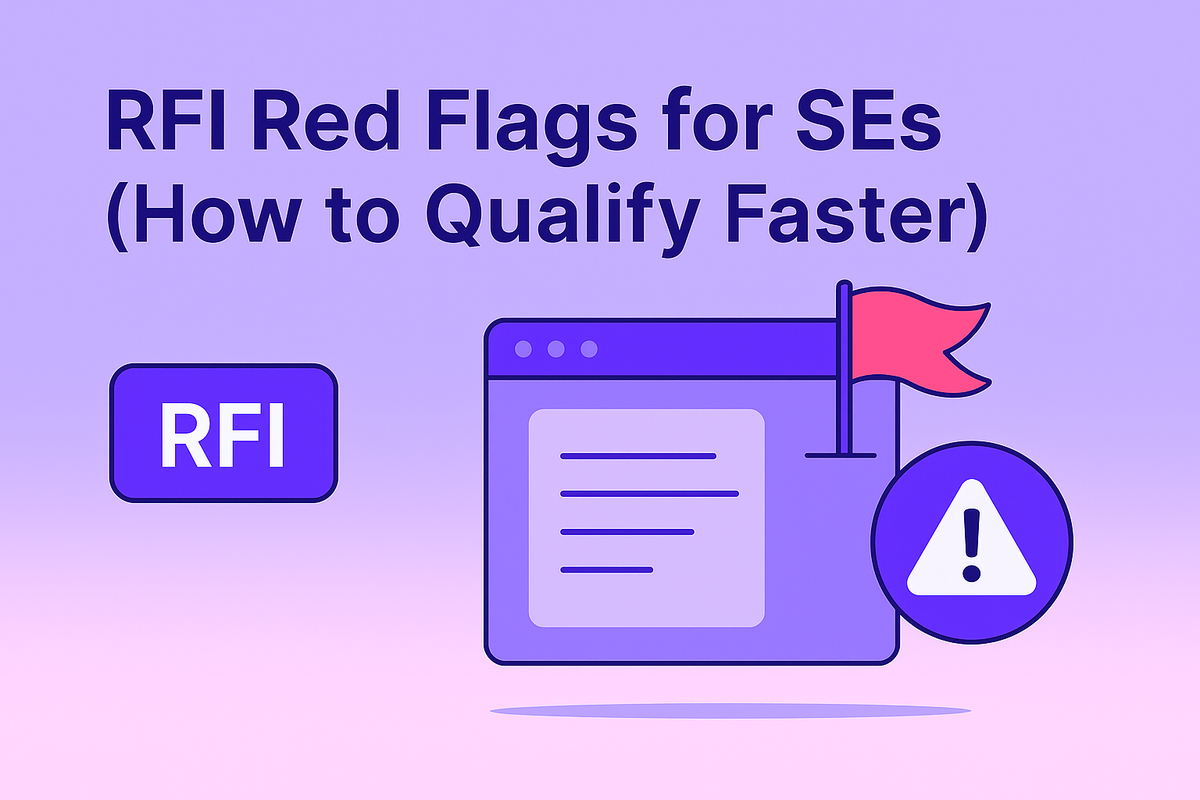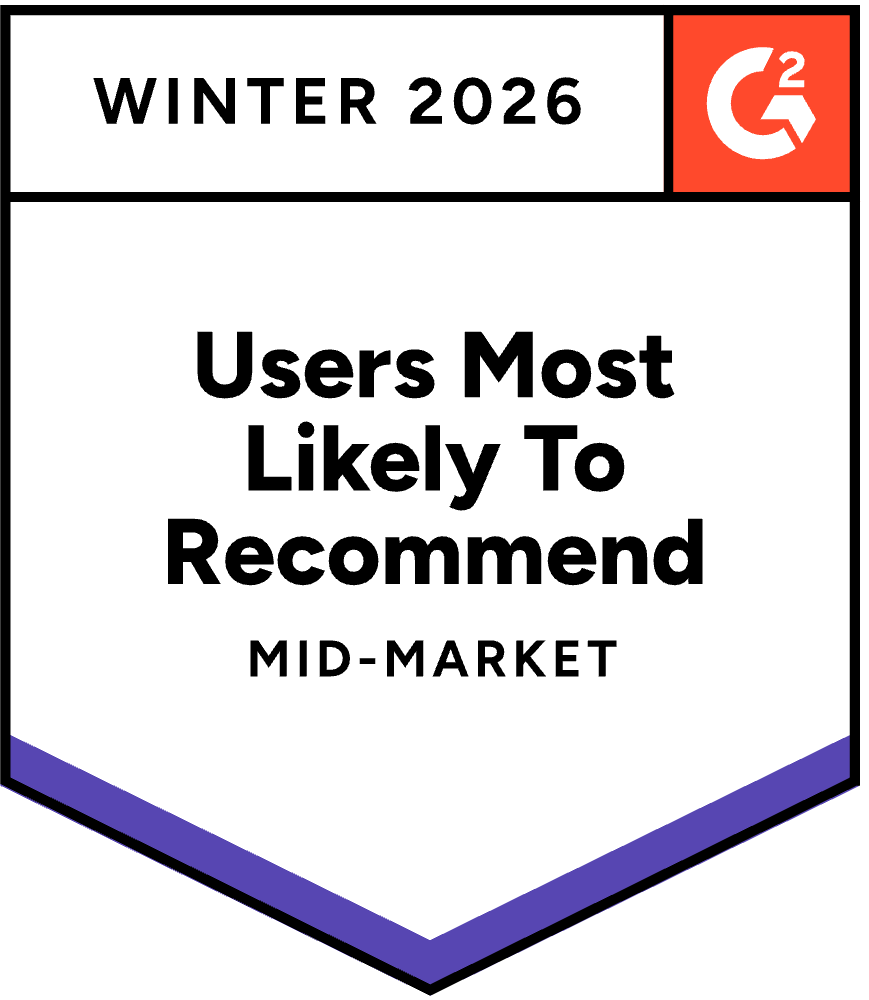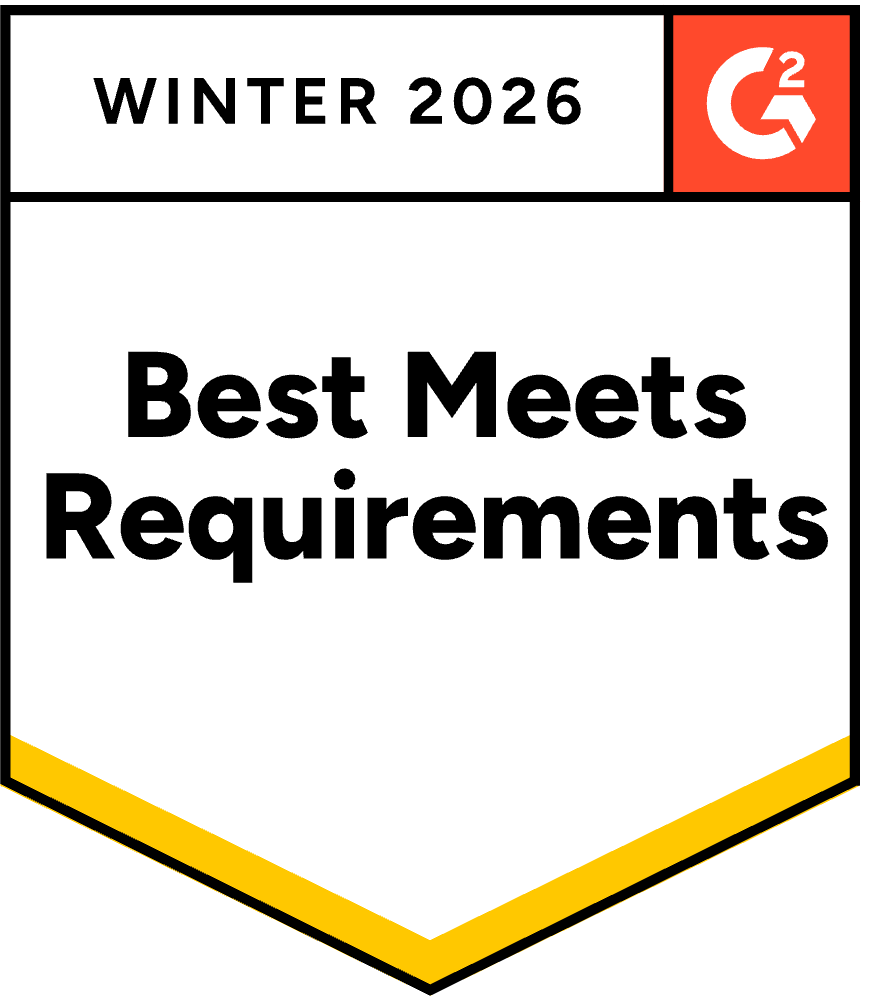11 SASE RFI Red Flags That Waste Your Time
October 28, 2025
By
Evie Secilmis

For any presales or sales engineering team, time is the most valuable currency. Yet, it’s often spent on tasks that don't move the needle, like responding to low-intent RFIs. When a highly technical SASE RFI lands in your inbox, the pressure is on. It represents a complex, high-stakes deal, but it also demands hours of your best technical minds. The critical question isn't just how to respond, but if you should respond at all. This article is for the teams who are tired of wasting cycles. We’ll give you a practical framework for spotting the red flags early, so you can protect your bandwidth for the deals you can actually win.
Understanding SASE and the RFI Process
When you're in the business of selling complex tech solutions, you're bound to run into a whole dictionary of acronyms. One that's become increasingly common in IT and security proposals is SASE (Secure Access Service Edge). It represents a major shift in how companies approach network security, moving away from traditional, office-centric models to a more flexible, cloud-based framework. For sales teams, understanding SASE isn't just about knowing the definition; it's about grasping why your potential clients are interested in it and how to position your solution effectively. This means you can speak confidently about how your product addresses the modern challenges of a distributed workforce and cloud-first environments.
At the same time, you need to master the procurement process your clients use to evaluate these solutions. This often starts with a Request for Information (RFI). An RFI is an exploratory document that helps a company gather insights before they issue a more formal Request for Proposal (RFP). Knowing how to respond to an RFI for a SASE solution requires a solid foundation in both the technology and the procurement lifecycle. This knowledge allows you to provide clear, valuable information that builds trust with a potential buyer and sets the stage for a successful sales conversation down the line.
What is SASE (Secure Access Service Edge)?
So, what exactly is SASE? Think of it as a modern security guard for a company that doesn't have a single, fixed headquarters. Instead of routing all traffic through a central office for security checks, SASE provides security from the cloud, right where users and applications are. It's a framework that combines comprehensive network and security functions into a single, integrated cloud service. This is crucial for businesses with remote employees, multiple branch offices, and a heavy reliance on cloud apps, as it ensures everyone has secure and fast access no matter where they are connecting from, without compromising on performance or safety.
Core Components of a SASE Solution
SASE isn't a single product but rather a bundle of key technologies working together. According to cybersecurity leader Fortinet, it brings together several critical networking and security tools into one platform. The core components typically include Software-Defined Wide Area Networking (SD-WAN) for efficient network routing, a Secure Web Gateway (SWG) to filter unwanted web content, and a Cloud Access Security Broker (CASB) to protect data in cloud apps. It also features Firewall-as-a-Service (FWaaS) for network protection and, most importantly, Zero Trust Network Access (ZTNA), which operates on the principle of "never trust, always verify" for every access request, ensuring tight security across the board.
SASE vs. Traditional VPN and SD-WAN
For years, companies relied on Virtual Private Networks (VPNs) to give remote employees secure access. However, VPNs often create bottlenecks by routing all traffic through a central point, which can slow things down for users accessing cloud applications. SASE, on the other hand, uses ZTNA to grant specific, limited access directly from the cloud, making it much faster and more secure. It's also important to understand how SASE relates to SD-WAN. While SD-WAN is a key part of the puzzle that handles smart and efficient network connections, SASE is the bigger picture. It incorporates SD-WAN's networking capabilities and layers a full suite of cloud-native security services on top.
What is a Request for Information (RFI)?
A Request for Information, or RFI, is a formal document companies use to gather general information from potential suppliers early in the buying process. It's less about getting a price quote and more about exploring the market. A company might issue an RFI to understand the available technologies, learn about different vendors' approaches, and get a feel for the industry landscape before they commit to a specific direction. For sales teams, an RFI is your first real opportunity to educate a potential client and showcase your expertise, setting the foundation for a future sale by positioning your company as a knowledgeable partner.
RFI vs. RFP vs. RFQ: Knowing the Difference
It's easy to get RFI, RFP, and RFQ mixed up, but they each serve a distinct purpose in the procurement journey. As tech publication Inventive AI explains, an RFI is for information gathering. Once a company has used the RFI responses to narrow down its options, it will typically issue a Request for Proposal (RFP), which is a much more detailed request for a specific solution. Finally, a Request for Quotation (RFQ) is all about the price; it's used when the buyer knows exactly what they want and just needs to compare costs. Managing these documents requires precision, which is why many teams use an AI deal desk to keep information consistent and accurate across every response.
Evaluating SASE Architecture and Solutions
When a potential client starts evaluating SASE solutions, they're looking beyond the marketing buzzwords. They need to understand the underlying architecture to see if it truly meets their needs for a converged, cloud-native service. This is where the technical details matter. A solid SASE architecture isn't just a bundle of existing products rebranded; it's built from the ground up to be a single, cohesive platform. It should be able to identify sensitive data and malware, decrypt traffic, and apply corporate security policies consistently for any user, on any device, anywhere in the world, without creating performance issues.
As a sales professional, your ability to clearly articulate your solution's architecture is key. You need to explain how it delivers both networking and security functions from a single-pass engine, which is far more efficient than chaining together multiple point solutions. This evaluation phase is where you can differentiate your offering by demonstrating a deep understanding of the client's challenges—whether it's simplifying their IT stack, securing a remote workforce, or reducing latency for users accessing cloud applications. Your goal is to show them that your architecture is not just a concept but a practical and powerful solution to their real-world problems.
Fundamental Principles of SASE Architecture
The core idea behind SASE architecture is "convergence." According to experts at Cato Networks, this means truly combining networking and security into one global, cloud-native service, rather than just linking separate tools together. A true SASE architecture is built on a global network of Points of Presence (PoPs), ensuring that security and networking services are delivered from a location close to the user, which reduces latency. All traffic—from data centers, branch offices, mobile users, and cloud resources—is processed through these PoPs, where a full stack of security functions is applied consistently, creating a seamless and secure user experience regardless of location.
Gartner's Perspective: A Transformational Technology
The significance of SASE isn't just hype; it's recognized by leading industry analysts. Gartner, the firm that coined the term, rated SASE as "transformational." This is a higher rating than even SD-WAN, another major networking technology, ever received. This classification signals that SASE is expected to have a major impact on the IT industry, fundamentally changing how businesses design and manage their networks and security. For buyers, this endorsement from Gartner provides confidence that investing in a SASE strategy is a forward-thinking move that aligns with the future of enterprise IT, making it a powerful point to bring up in sales discussions.
Key Benefits of Adopting SASE
For businesses, the move to a SASE model offers a compelling list of advantages that address many of the pain points of traditional IT infrastructure. The benefits go beyond just technology; they impact security posture, operational efficiency, and the bottom line. By consolidating multiple networking and security functions into a single cloud-based service, companies can drastically simplify their IT environment. This means fewer vendors to manage, fewer appliances to maintain, and a more unified policy management system, which frees up IT teams to focus on more strategic initiatives instead of just keeping the lights on and managing a complex web of disparate tools.
Better Security with a Zero Trust Approach
One of the most significant benefits of SASE is the enhanced security it provides. At its core, SASE implements a Zero Trust security model, which means no user or device is trusted by default, whether they are inside or outside the corporate network. Access is granted on a least-privileged basis, meaning users only get access to the specific resources they need to do their jobs, and their identity is continuously verified. This approach offers strong protection against modern cyber threats by significantly reducing the attack surface and preventing lateral movement by intruders if a breach does occur, a key selling point for any security-conscious organization.
Reduced Complexity and Cost Savings
By converging networking and security into a single platform, SASE eliminates the need for a patchwork of point products from different vendors. This consolidation dramatically reduces complexity for IT teams. Instead of managing multiple hardware appliances and software agents, they have one unified console. This simplification also leads to significant cost savings. Companies can move from a capital-intensive model of buying and maintaining expensive hardware to a more predictable, subscription-based cloud service. This shift not only lowers upfront costs but also reduces the ongoing operational expenses associated with managing a complex and fragmented infrastructure.
A Buyer's Checklist for SASE Solutions
When your prospects are ready to evaluate SASE vendors, they need a clear checklist to cut through the noise. The first thing they should look for is a truly unified, cloud-native platform. Many vendors claim to offer SASE but are really just bundling legacy products. A true SASE solution is built on a single software stack and delivered from a global network of PoPs. Buyers should also assess the breadth and depth of the security services offered, ensuring they cover everything from SWG and CASB to FWaaS and ZTNA, all managed through a single policy engine for maximum efficiency and consistency.
The Importance of Independent Testing and Certifications
In a crowded market, claims are easy to make, but proof is what matters. As noted by CyberRatings.org, many buyers now rely on real-world test results and third-party certifications before making a decision. When responding to an RFP or RFI, being prepared with this evidence is crucial. Buyers will want to see independent validation of your solution's performance, security efficacy, and reliability. Having this data readily available not only builds credibility but also demonstrates transparency, showing that you are confident in your solution's ability to deliver on its promises. This is where having accurate, up-to-date information in your content library becomes a competitive advantage.
How presales teams spot misaligned RFIs early and protect technical bandwidth
RFIs can be powerful buying signals — or massive time-sinks.
For Sales Engineers, the challenge isn’t just responding fast. It’s knowing when not to engage.
In modern cycles, RFIs often bundle:
- Architecture validation
- Security & compliance questions (see security questionnaire glossary)
- AI oversight and governance requests
- Integration and deployment requirements
- Procurement screening
But not every RFI deserves a 6-hour technical marathon.
This guide helps SEs spot red flags early, qualify faster, and protect bandwidth without harming deal momentum.
For fundamentals, review our RFI glossary definition and RFI vs RFQ vs RFP breakdown first — this post builds on that foundation.
1. They Can't Explain the Business Problem1. No Business Need or Problem Context
If an RFI contains:
- Zero mention of pain or workflow
- No context on the trigger event
- Pure feature checklists
…it’s not qualification — it’s procurement research disguised as buying intent.
Ask:
“Can you share the business challenge or team mandate driving this?”
If they can’t, pause. No context = no urgency.
2. Where Are the Technical Stakeholders?2. No Technical Stakeholders Involved
Biggest presales red flag:
Enterprise RFI, no SE, IT, or security contact.
When procurement runs RFIs in isolation, your answers will sit in a shared drive until someone cares. Or never.
Recommended response:
“To ensure accuracy, can we bring in a technical lead for architecture and identity questions?”
If the answer is no? Low-intent signal.
3. The RFI Feels Written for a Competitor3. Biased Language Suggests an Incumbent
Common giveaway phrases:
- “Must support legacy X system only”
- “No external LLM usage permitted”
- “Solution must use on-prem Linux stack + specific vendor integrations”
- “AI optional — automation preferred”
Translation: They already picked someone, and you're here for compliance optics.
When RFI language mirrors a competitor’s brochure, proceed cautiously.
4. The Questions Are Too Vague4. Overly Generic Questions
Examples:
- “Describe your company”
- “What features do you offer?”
- “Explain your AI capabilities”
No scoring logic + high ambiguity = fishing expedition.
Point them to your RFI template guide or request structure before spending hours drafting.
5. The Deadline Is Unrealistic5. Unrealistic Timelines
If you see:
- 200 questions
- 48-hour deadline
- Same day compliance review
…it’s urgent for them, but risky for you.
Ask:
“For accuracy, can we align timeline with SMEs and compliance stakeholders?”
If not, this isn’t partnership — it’s vendor stress-test theater.
6. They Ask for Sensitive Info, No NDA6. “Send Your SOC 2 + Security Docs Now” Without NDA
Security teams never rush privileged docs without controls.
If they insist, pause and direct them to:
- Public trust page, or
- A mutual NDA workflow
If they decline → not a serious enterprise evaluation.
Reinforce with the security questionnaire definition page.
7. You Don't Know How You'll Be Scored7. No Clear Evaluation Criteria
Signs:
- No scoring matrix
- No tie-break logic
- No “how we choose vendors” language
- “We are early in research phase” disclaimer
Ask:
“How will success be measured for this RFI?”
If they can't answer, you're not in a buying cycle — you're in a spreadsheet exercise.
8. It's a One-Way Street of Data Requests8. Endless Data Requests Without Engagement
If a buyer refuses:
- Discovery call
- Architecture walkthrough
- Sandbox talk
- Security readout
…but still wants 50 technical artifacts?
They're collecting documents, not evaluating solution fit.
Offer SE architecture session as the next step. If declined, deprioritize.
9. You're Drowning in "Copy-Paste" Questions9. “Copy-Paste Hell” Questions
Some RFIs look like:
- 10 systems stitched together
- Government boilerplate reused by finance
- Questions contradicting each other
- AI questions from 2019 + 2025 in the same doc
Your time ≠ their editing tool.
Suggest a structured discovery call and point to our RFP preparation guide for modern workflows.
10. They're Unclear on Their Own Tech Needs10. Lack of Alignment on Deployment or Data Model
If they want:
- On-prem only — but you're SaaS
- Full data isolation but no enterprise budget
- Zero external model usage, but advanced AI
You're not being evaluated — you're being disqualified quietly.
Surface deployment expectations early; direct to Iris feature pages for clarity.
Bonus Red Flag: They Ask for Your Product RoadmapBonus Red Flag: They Ask for Your Roadmap PDF
This means:
- They are evaluating your strategy for another vendor
- Or they plan to use your ideas to scope requirements
Instead say:
“We can walk through roadmap themes live and align around enterprise needs.”
Never hand over your long-term product playbook without trust built.
Best Practices for the SASE RFI Process
Now that you know what red flags to look for, let's flip the script. A well-managed RFI process is a two-way street. Whether you're the one asking the questions or the one answering them, a little strategy goes a long way. Getting it right means you gather clear, comparable information (for buyers) and you stand out as a true partner (for vendors). It’s about moving beyond the checklist to have a real conversation about solving a problem. This approach ensures that both sides invest their time wisely, leading to better partnerships and more successful outcomes for everyone involved.
For Buyers: How to Write an Effective RFI
To get valuable responses, you need to write a valuable RFI. Start by clearly explaining the business problem you're trying to solve, not just listing features you think you need. Be specific about your technical, security, and integration requirements so vendors can give you relevant answers. Frame your questions to be direct and focused, avoiding vague prompts that lead to generic marketing copy. Finally, set a realistic timeline for submissions and reviews. This shows respect for the vendor's effort and helps you manage the process efficiently, ensuring you get thoughtful, high-quality information back instead of rushed, incomplete answers.
For Vendors: How to Craft a Winning Response
A winning RFI response shows you understand the buyer's world beyond the document itself. Look for clues about their long-term business goals and tailor your answers to address their specific challenges. Instead of just listing features, focus on the value and results your solution delivers—how will it save them money, improve performance, or reduce risk? And don't be afraid to be honest. If you can't meet a specific requirement, say so and suggest a workaround. This transparency builds trust. Using a platform like HeyIris.ai can help you quickly pull accurate, approved content, so you can spend more time personalizing your response and highlighting the outcomes that truly matter to the buyer.
How to Qualify a SASE RFI More EffectivelyHow SEs Qualify Faster
A Better RFI Qualification Framework
Use this matrix to triage RFIs quickly, protect presales time, and keep only high-signal opportunities moving.
| Signal / red flag | SE move | Ask these questions | Gate / criteria | Next step CTA | Disposition |
|---|---|---|---|---|---|
| No business problem stated | Pause content creation; request discovery | “What outcome are you targeting? Who owns it? What happens if we do nothing?” | Clear pain, owner, and timeline | 30-min discovery to define scope & success metrics | Defer until problem is defined |
| Procurement-only RFI (no IT/Sec/SE) | Require technical stakeholder | “Who is the technical approver? Can we add them to review architecture/identity?” | Named IT/Sec contact joins | Architecture intro with technical lead | Park until technical owner engaged |
| Incumbent-biased language | Qualify fairness; propose outcomes language | “Can we restate requirements as outcomes vs. vendor specifics?” | Neutralized requirements or alternate scoring | Scoring framework review | Proceed cautiously; time-box effort |
| Huge questionnaire + 48h deadline | Scope ruthlessly; prioritize top sections | “Which 10 questions decide shortlisting? What can move to the next phase?” | Priority subset agreed | Two-phase response plan | Proceed with scoped phase 1 |
| Security docs requested pre-NDA | Route via trust page + NDA | “Can we execute mutual NDA? What specific artifacts do you need first?” | NDA in place or public docs only | NDA + security Q&A session | Hold sensitive docs until NDA |
| No evaluation criteria | Ask for scoring model | “How will you score responses? What are tie-breakers?” | Written scoring rubric | Rubric workshop (30 min) | Deprioritize until rubric exists |
| Endless artifact requests, no meetings | Trade docs for engagement | “Can we review architecture live to ensure accuracy before sharing full pack?” | Live session accepted | Architecture + security review | Limit to public docs if no meeting |
| Deployment/data model misfit | Qualify feasibility; offer alternatives | “Is VPC or private tenant acceptable? Which controls are must-have vs nice-to-have?” | Feasible path confirmed | Feasibility workshop | No-bid if constraints are hard blockers |
| Copy-paste/contradictory RFI | Normalize requirements | “Can we consolidate duplicates and remove conflicts before responding?” | Clean, deduped doc | RFI cleanup session | Time-box effort; request revision |
| Roadmap fishing (asks for roadmap PDF) | Share themes live, not docs | “Which outcomes matter? We can review near-term themes in session.” | Live roadmap discussion | Roadmap alignment call | Withhold detailed PDF |
| AI concerns without context | Educate; anchor on governance | “Which risks worry you most: privacy, accuracy, auditability?” | Risk categories identified | AI governance deep-dive | Proceed post-education |
| Budget ambiguity | Qualify commercial bands | “Is there an approved range? Renewal exposure constraints?” | Budget band confirmed | Commercial alignment call | Proceed if band fits; else park |
RFIs should accelerate selling — not trap presales in doc work.
Screen RFIs in Minutes, Not HoursHow Iris Helps SEs Screen RFIs Faster
📍 Centralize approved answers: Knowledge Map
⚡ AI-draft responses with SME control: Ask Iris
📚 Reuse security + architecture language across cycles
🧠 Preserve SE knowledge so it scales beyond individuals
🛠️ Governed knowledge for AI-safe, client-safe responses
Or go hands-on:
👉 Request a demo
Reduce RFI Completion Time by up to 80%
Once you’ve qualified an RFI, the next challenge is speed without sacrificing quality. The biggest drag on a presales team isn't always the complex technical questions—it's the sheer volume of repetitive ones. This is where teams get stuck in documentation cycles instead of accelerating sales. But it doesn’t have to be a time-sink. By leveraging AI-powered response software, teams can reduce their RFI completion time by up to 80%. This isn’t about cutting corners; it’s about eliminating the redundant work of hunting for answers in old documents and shared drives. The foundation for this efficiency is a centralized knowledge base that stores your best, pre-approved answers for security, architecture, and compliance questions.
With a governed knowledge base in place, AI can instantly generate accurate first drafts. Instead of your experts spending hours on copy-paste tasks, they can focus their time on refining the strategic answers that differentiate your solution. This is exactly how the Iris platform works. It connects to your systems to build a single source of truth, then uses that trusted information to draft high-quality responses to RFIs, security questionnaires, and RFPs. This approach ensures your team’s expertise scales, freeing them from repetitive doc work to focus on what they do best: solving customer problems and winning deals.
Keep Learning
Frequently Asked Questions
What's the quickest way to spot a time-wasting SASE RFI? Look for a lack of human involvement. If the RFI comes from a procurement contact with no technical stakeholders looped in, or if they refuse a discovery call to discuss the business problem they're trying to solve, it’s a major red flag. These signs suggest they are just collecting data for a spreadsheet, not seriously evaluating a solution for a real-world pain point.
How can I push back on a vague RFI without sounding difficult or losing the opportunity? The best approach is to frame your pushback as a way to help them. Instead of saying no, suggest a more effective next step. You could say, "To make sure our answers are as accurate and relevant as possible, could we schedule a brief call with a technical lead to walk through your architecture goals?" This positions you as a helpful partner who values precision, not a difficult vendor.
Why are SASE RFIs so much more complex than other IT proposals? SASE isn't a single product; it's a framework that combines a company's networking and security stacks into one cloud service. This means an RFI has to cover everything from network performance (SD-WAN) and cloud application security (CASB) to identity verification (ZTNA). Because it touches so many critical parts of a business's infrastructure, the evaluation process is naturally more detailed and demanding.
Is it ever a good idea to respond to an RFI that has a few red flags? It depends on the red flags and your relationship with the account. If the timeline is tight but you have a strong champion inside the company who can help you, it might be worth the effort. However, if there's no clear business problem, no technical contact, and the questions are biased toward a competitor, your time is almost always better spent on deals you actually have a chance of winning.
My team is drowning in RFIs, even the good ones. What's the first step to making the response process faster? Start by building a single source of truth for your best answers. The biggest time-sink is often hunting down approved content for security, compliance, and technical questions that you've answered a hundred times before. Creating a centralized, governed knowledge base is the foundation for speed and consistency. Once you have that, you can use tools to pull that information into drafts, freeing your experts to focus on strategy instead of copy-pasting.
Key Takeaways
- Insist on the "why" before the "what": An RFI that only lists technical features without explaining the business problem is a sign of a fishing expedition, not a serious buying cycle.
- Treat red flags as stop signs: Unrealistic deadlines, no technical contacts, and biased questions aren't challenges to overcome; they are clear signals to deprioritize the request and protect your team's valuable time.
- Standardize your process to scale your expertise: Use a qualification framework to quickly vet incoming RFIs, and leverage a central knowledge base to handle the repetitive work on high-value deals.
Share this post
Link copied!




















